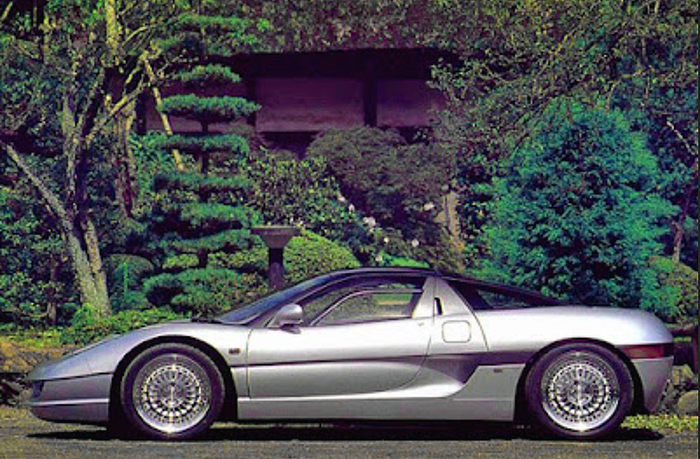Few probably know the name of the company Gigliato Japan, founded in 1987 by designer Nobuo Nakamura.
And perhaps even less so that of the Airosa, a supercar that was developed on behalf of Gigliato - and should have been built - by none other than Automobili Lamborghini in the second half of the 1990s.
The history of these cars, or rather of the only 2 examples produced at different times, is truly complex. Around 1991, the first phase saw only companies from the Land of the Rising Sun involved in the attempt to bring the Aerosa into dealerships.
At that time, however, the Japanese industry was still very 'harnessed' by laws and regulations, so much so that it limited the initiatives of small manufacturers, especially from an export point of view.
In the second half of the 1990s, however, Lamborghini entered the scene, the well-known brand of sports cars which at that time was Indonesian-owned and had an overall limited production.
Lambo, in 1994, was in fact purchased by Megatech, a company with registered office in the Bermuda Islands and a division of the Indonesian group Sedtco Ltd. This was managed by Setiawan Djody (a popular local singer and businessman) and Tommy Suharto, son of then president of Indonesia.
Returning to the early years of life of the Gigliato - which took its name from a silver coin issued for the first time in Naples by Charles II of Anjou in 1303 - Nakamura had hypothesized a sports car of relatively compact dimensions, to be launched on the Japanese market ( devoid of production of this type) and then exported.
Prototype #1 built in 1995 used a 220 hp V6 engine designed by Yamaha for Ford (the same one used in the first Taurus SHO).
Its construction took place in Dusseldorf, Germany and ambitious plans were even announced for Le Mans starting in 1998. But the project stalled, essentially due to a lack of funds and the aforementioned difficulties in obtaining permits to manufacture it in Japan.
But Nakamura had no intention of stopping the program.
The designer, who then came from Suzuki - and after the Aerosa adventure was called to Toyota where he also designed the Supra - therefore began looking for a possible partner to create his Aerosa outside of Japan.
And the most interesting opportunity was to deal with Lamborghini (where Luigi Marmiroli, to whom we owe much of the news on this story, worked as chief designer) through Walter Wolf, a Canadian business at the time very close to the Casa del Toro in Germany.
But let's go back to Gigliato.
The Japanese company and Automobili Lamborghini set to work to create the operational joint venture and for this purpose an abandoned plant (where Lamborghini had produced its Formula 1 engines) was identified to make it the headquarters of the Aerosa project.
The workers of the Sant'Agata Bolognese company were supported by 5 Japanese engineers with experience in Cad design. And what emerged in phase two of the project - the Aerosa GTS - was a supercar with a substantially improved design and significantly improved performance (on paper). superior because a 310 HP 4.6 V8 was chosen for the prototype, the same as the Ford Mustang SVT Cobra.
However, for the production model the aim was even higher and the consortium leader Marmiroli signed a preliminary agreement to obtain from Lotus a twin-turbo V8 type 918 engine rated at 420 HP.
After the presentation of the Arenosa GTS at the 1997 Geneva Motor Show - where the car had also achieved moderate success among professionals - an announced twist radically changed the fate of the Gigliato Aerosa made in Emilia.
In 1998, Automobili Lamborghini, which was going through a period of great difficulty in Indonesian management (204 cars had been sold in 1995), was in fact purchased by Audi, effectively entering the galaxy of the Volkswagen Group.
All programs were canceled (in the meantime Marmiroli had left the company and returned to operate through his FlyStudio) and the attention of the new management was focused on a second model to accompany the heir to the Diablo.
Thus the Murciélago with the V12 engine was born in 2001 and the Gallardo with the V10 in 2003, the first widely distributed Lamborghini, with over 14 thousand examples sold in 10 years of production.
Reproduction reserved © Copyright ANSA

